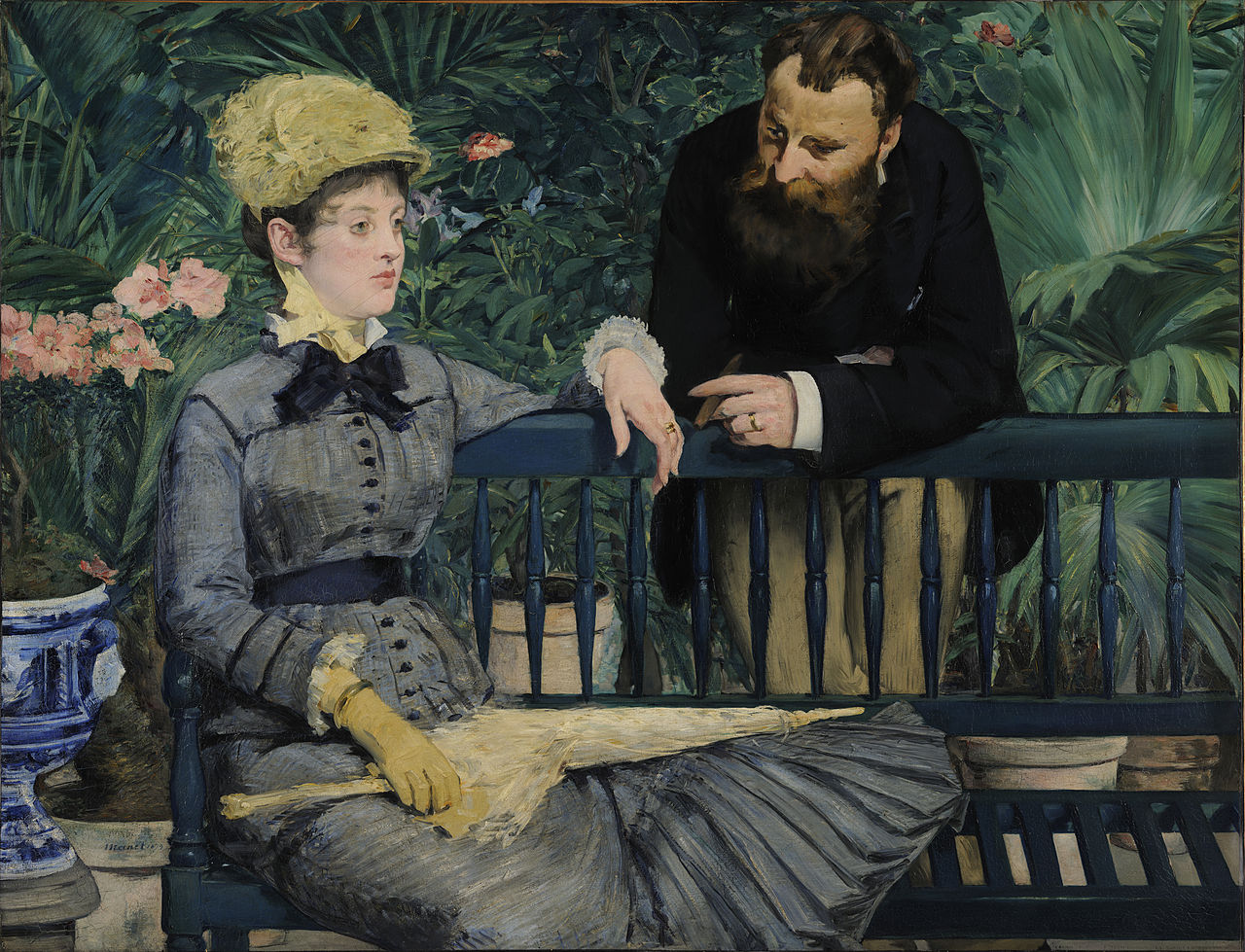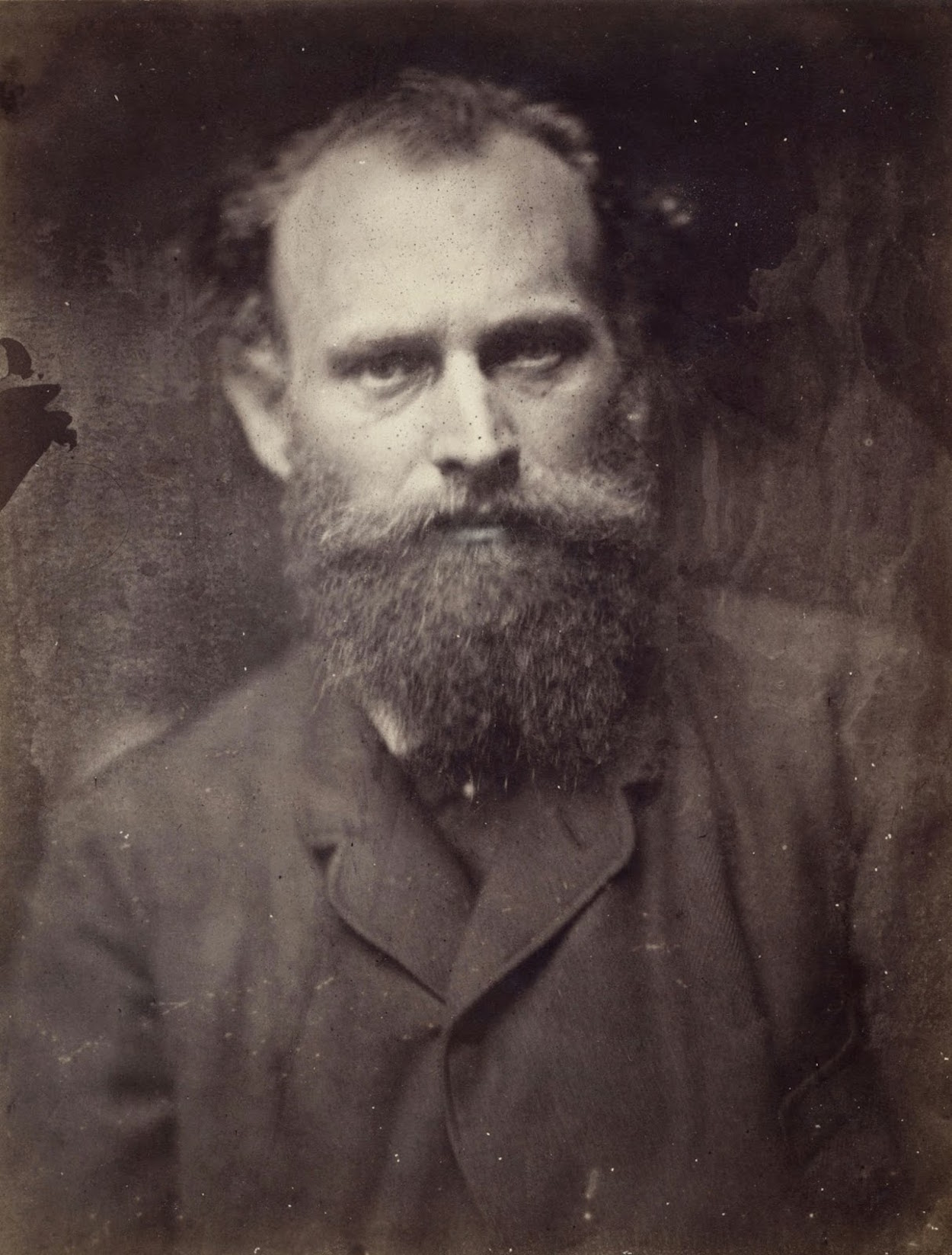We continue our special month with the Alte Nationalgalerie and Gemäldegalerie (Staatliche Museen zu Berlin) in Berlin. Today we have for you this amazing Manet. Enjoy!
Manet preferred compositions with two figures as opposed to the straightforward portrait form because it opened up the possibility of interesting dialogue situations. The double portrait of Jules Guillemet and his wife, painted in the conservatory of the painter Johann Georges Otto Rosen, is one of the most important of these works because of the sensitivity with which it uses the most delicate nuances of colors and contrasts to describe and re-connect the psychologically tense, only outwardly detached, relationship of the two figures.
The theme of the picture is the interplay between the elegant lady—the owner of a fashion shop in Paris—and the gentlemen turned in her direction. He seems rather small due to the way he is bending over and brushes against the upper edge of the picture, while the feminine beauty with the effortless noblesse of her extended posture occupies a large part of the picture space. Despite their being separated by the back of the seat, with its own graphic appeal by virtue of its transparency, the understated focal point of this rich conservatory scene with all its plant forms and subtle colors is the hands approaching each other.
Manet’s paintings are fascinating for a variety of reasons: a palette of colors that is subtle yet not without the tension of contrast, plus subject matter that is free from literary or symbolic content. This is painting at its highest level, drawing on an uncommonly fertile imagination, on the constant awareness of visual phenomena, and on a gift for laconic observation that translates every sight into a subtly mediated experience for the eyes. Particularly in the compositions with two or more figures, there are also extremely skillfully dramatized scenes with psychologically intriguing configurations of actors or often of silent players, wordless and motionless like the different elements in a still life.
P.S. Here you will find the 10 best portraits of Édouard Manet!


 Édouard Manet
Édouard Manet